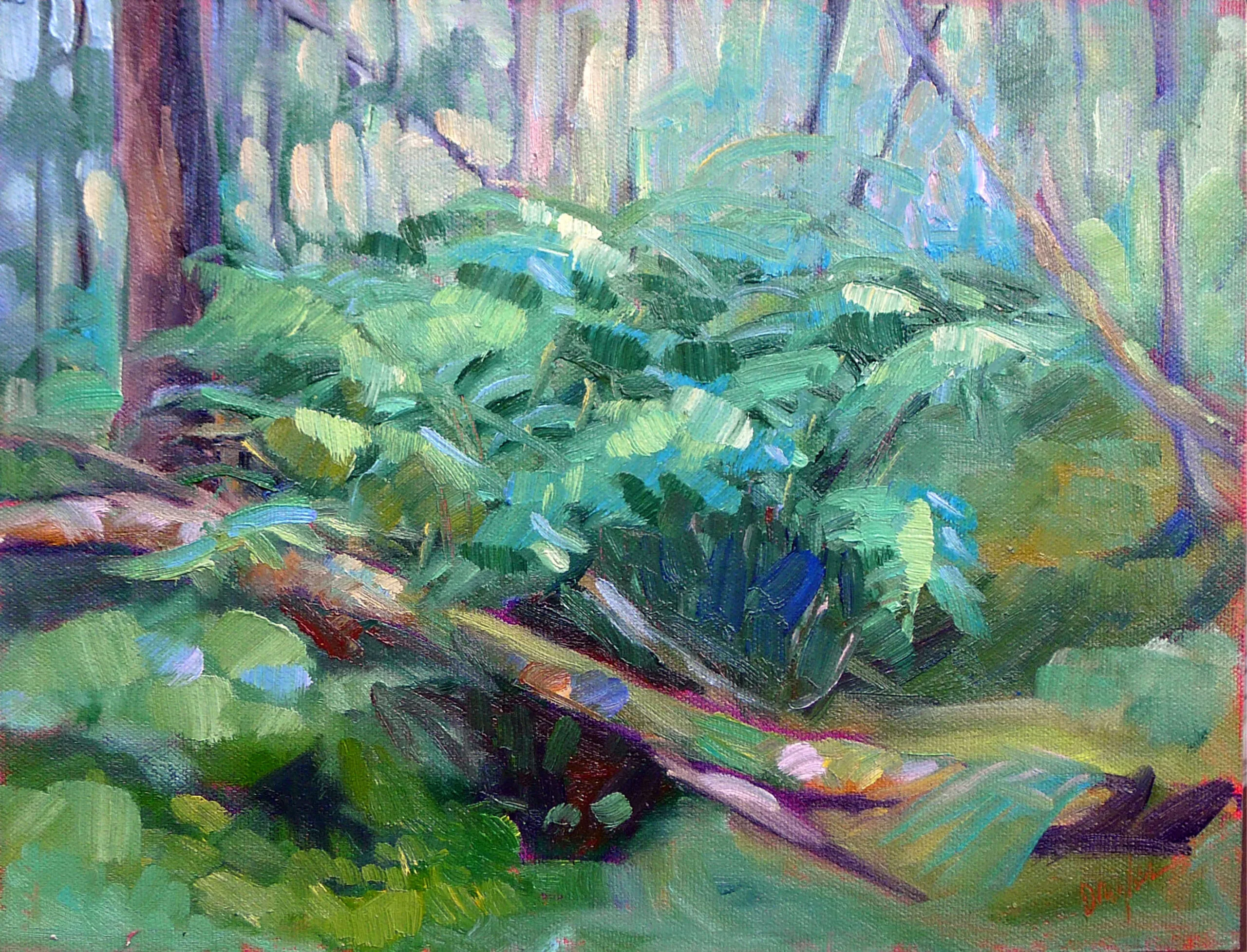
I have no business complaining about the heat. My friend Pastor John Nicholson of Marion, Alabama recently texted me that it was 91° at 7:45 AM. But just as he’s not acclimated to subzero temperatures in winter, we’re not acclimated to 80° in summer. But that’s what we’ve been getting, and all in all it has been a magnificent summer here in the northeast.
When the temperature rises, I head into the woods. Painting in the forest is lovely on a hot summer day.
How to paint a forest, in a nutshell
- Sort out a pattern of lights and darks;
- Start with the composition—it’s easy to get lost in the jumble;
- Concentrate on details; they’re easier to make sense of than the overall picture;
- Think about texture.
Despite a lifetime of looking at northeastern ferns, I have a hard time identifying them, which is why I labeled the above painting as Bracken Fern for so long. A few years ago, a friend gave me a tutorial that ran the full 5.5 miles of the Round the Mountain Trail. I’m sharing with you, so you need never be embarrassed by ferns again.
With fronds like that, who needs anemones?
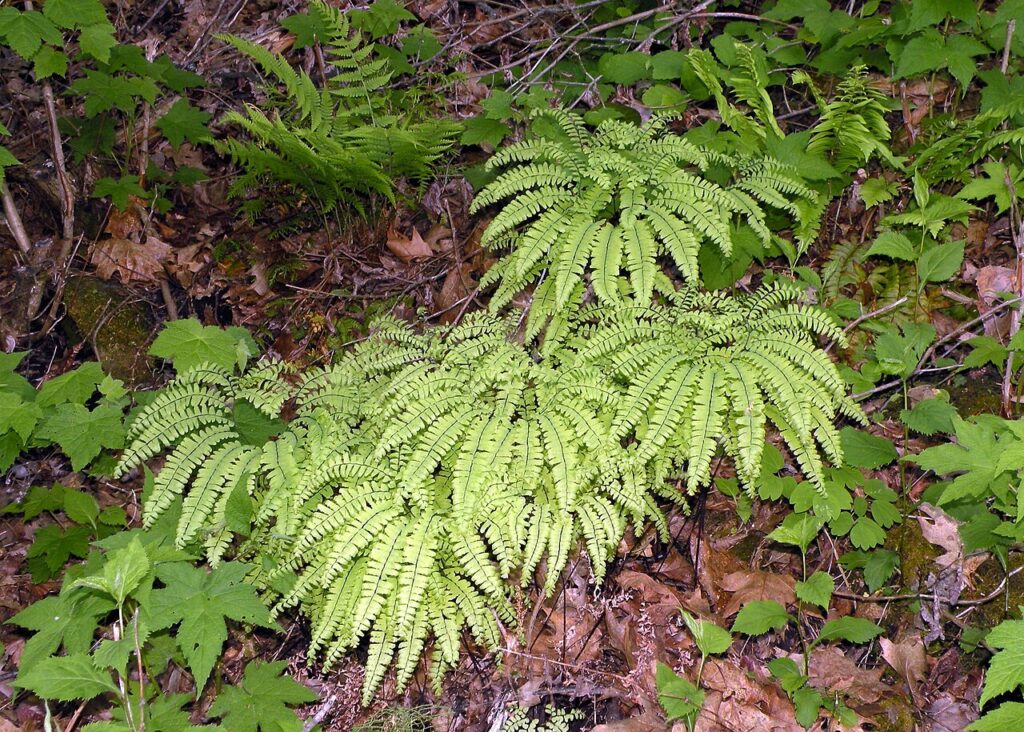
The Victorians were so crazy for ferns that they coined a word for fern madness: Pteridomania. Among their favorites was Maidenhair Fern, with its dark black stems, delicate foliage, and fan-shaped fronds. It’s the black stem that gives it its name, don’t ask me why.
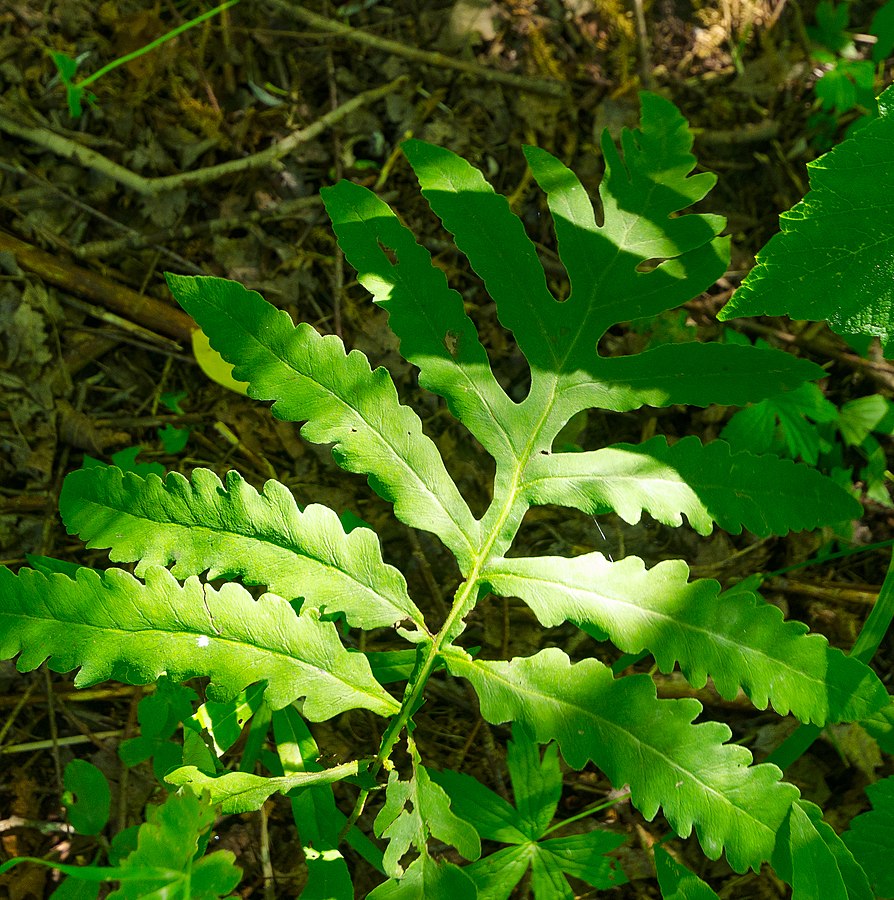
Sensitive Fern volunteers next to my garage (and many other places). It looks indestructible with its coarse, leathery leaves, but like many apparent tough guys, it’s delicate. Its name comes from the fact that it dies at the first frost.
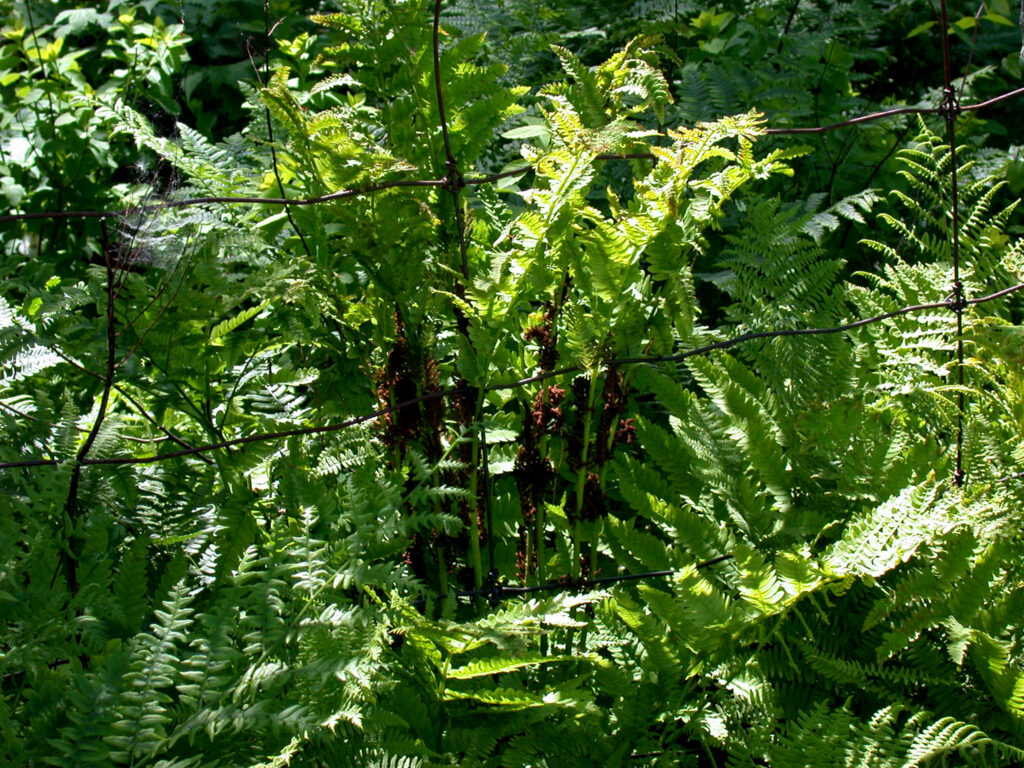
Interrupted Fern is a weird but handsome plant. Its fronds go from green pinnae at the base to brown spore-bearing pinnae in the middle, followed again by green pinnae at the top.
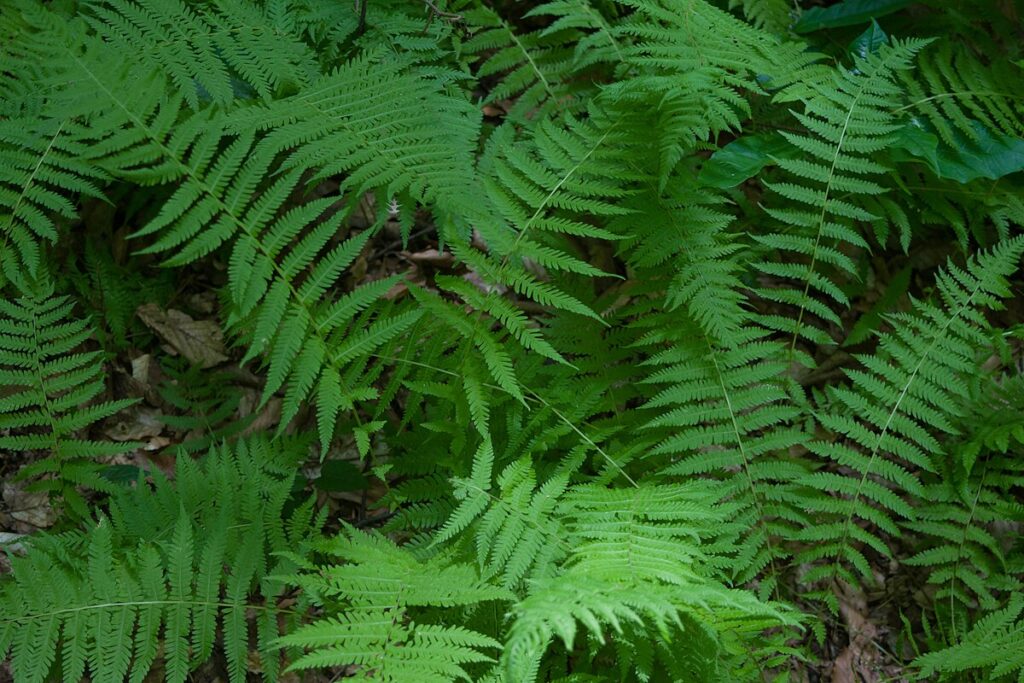
New York Fern, as you’d guess from the name, is an elegant fern that likes to colonize in tight, compact masses. A lot of them can fit in a small space, and they aren’t too picky about environmental conditions.
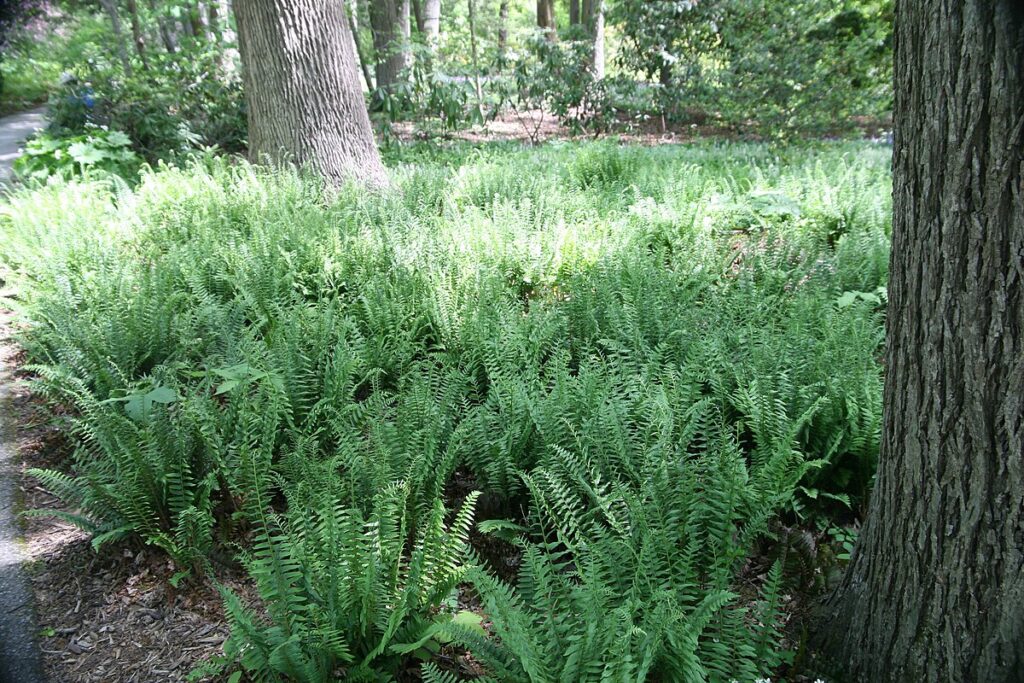
The fronds of Christmas Fern emerge red in the early spring and mature to a glossy green. It takes its name from the fact that the leaves stay evergreen until the new year’s growth starts in spring.
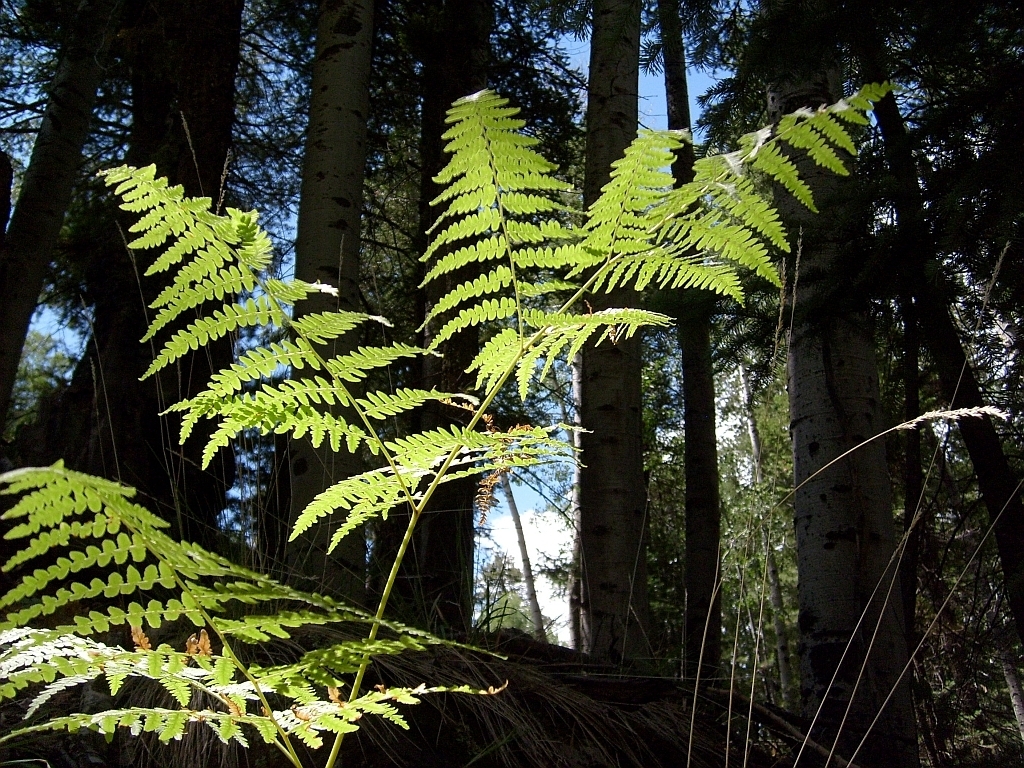
The blades of Bracken Fern grow almost horizontally, forming a dense canopy. Like many ferns, it’s somewhat allelopathic, meaning it produces biochemicals that suppress the growth of other organisms.
I’m still not sure after all these years whether what I painted above was Cinnamon or Bracken Fern. They look like Cinnamon in my painting, but I’ve revisited the site and found bracken there. But does it really matter? They’re beautiful either way.
Reserve your spot now for a workshop in 2025:
- Advanced Plein Air Painting, Rockport, ME, July 7-11, 2025.
- Sea and Sky at Acadia National Park, August 3-8, 2025.
- Find Your Authentic Voice in Plein Air, Berkshires, MA, August 11-15, 2025.
- Immersive In-Person Fall Workshop, Rockport, ME, October 6-10, 2025.

I will state for the record that I have never been embarrassed by painting a fern. I’m not sure that I have ever, in fact, painted a fern. But, full disclosure, I have been humiliated by more than one cactus.